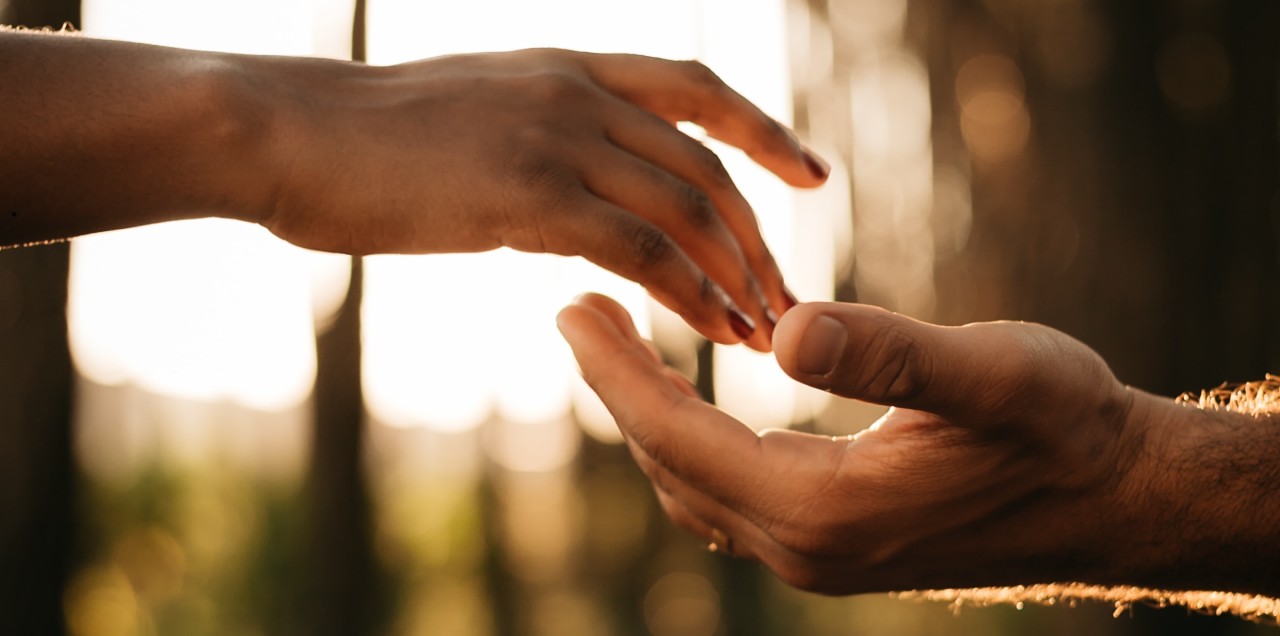Growing for years out of a special group of humans in Washington state, a new human language—pro-tactile ASL, has gained recognition.
Born from the spirit of human connection, those who can neither see nor hear use another person’s body as the canvass on which to communicate a nearly infinite-number of ideas, feelings, or just an old-fashioned chin-wag.
Verbally communicating humans use all kinds of additional sensory signals to aid the listener in understanding, such as making faces or hand gestures, but directly touching them, especially on the face or thigh, is reserved only for the closest human connections.
It can be strange, sometimes, for those speaking in American Sign Language (ASL) to see the literalness of certain signs—where a speaker might say “jolly” to cleverly disguise their true intention of describing a man’s waist size, ASL don’t have that luxury, and often have to sign a spade as a spade.
But for those who can neither hear nor see, language becomes even more stripped of its societal layers, and in a way becomes even more human.
MORE: Deaf Sheepdog Returns to Herding Her Flock After Learning ‘Sign Language’
In a first-hand encounter with a DeafBlind American, Katherine Ellen Foley, writing for Quartz, reported that the gentlemen using pro-tactile ASL explained through an ASL interpreter, “it’s the same concept as learning any other language, it’s just connecting with the group of people whose language you want to learn.”
The example Foley gives is “I climb a tree,” in which the signer literally takes your arm, and does the sign for walking up the arm as if it’s a tree. For lollipop, it’s quite the same, only with a closed fist for the candy part. While that may be difficult to interpret, a deaf ASL interpreter explained that in all languages, context is key.
While a closed fist at the end of a forearm could represent many things, from a hammer to a lollipop, the context of the sentence will steer speakers and signers towards the appropriate inference; just as in English we can detect from the other words in a sentence whether a speaker is saying “fair” or “fare.”
RELATED: Orchestra Allows Deaf People to ‘Hear’ Beethoven Through Touch – Much Like the Maestro Did
There may be as many as 50,000 people in America who are blind and deaf, and the new language is catching on. A business called Tactile Communications is providing necessary training in a linguistically and culturally appropriate setting in order to promote the autonomy of DeafBlind people. In 2016, their language, which arose spontaneously entirely among their own community, was showcased at the White House.
Communication is not just the domain of words and mouth sounds—it’s a form of understanding between humans. Returning to that core principle helped the pro-tactile system grow.
CHECK OUT: There Are Now 100 New Sign Language Terms for Scientific Words Thanks to This Deaf Student
The founder of Tactile Communications, Jelica Nuccio, set up communication environments without the crutch of interpreters to help ensure the skill was born of a symbiosis between necessity and invention. And it’s already making a huge difference to the lives of people across the country.
(WATCH the Christian Science Monitor video for this story below.)
Touch Others With This Inspiring Story; Share It On Social Media…




















